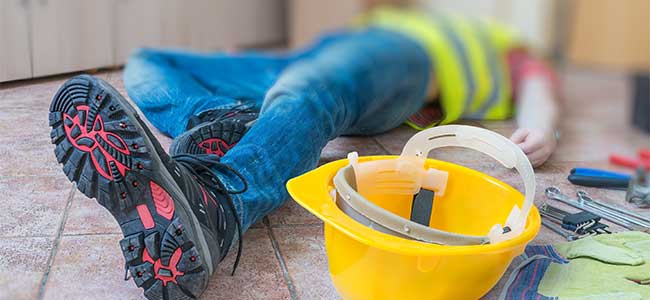
The Bystander Effect: Its Influence on Workplace Accident Response and Prevention
Learning more about the bystander effect can help organizations understand how it could affect workplace accident response if prevention measures are not taken.
- By Mia Barnes
- Apr 30, 2024
When an accident happens, people know they should ask for help. Whether that’s calling emergency services or finding someone who’s in charge, the intention to help can exist. But then, everyone stands around doing nothing. Learning more about the bystander effect can help to understand how it could affect workplace accident response if prevention measures are not taken.
What Is the Bystander Effect?
The bystander effect is a theory that states no one will get help if numerous people witness an emergency. It has nothing to do with the bystanders’ empathy or concern. Instead, each person automatically assumes that someone else will get help because so many people are aware of the problem.
When Does the Bystander Effect Occur?
This phenomenon occurs when an adverse event happens to fewer people than those who witness it. It could look like someone having a heart attack in a crowded mall. Many people witness the incident, but no one calls for help because they assume someone else is already dialing 911.
The bystander effect also happens in workplaces. Employees only intervene in unsafe situations around 39 percent of the time, even if they’re familiar with the team member in the adverse circumstance.
However, it’s important to note that situational factors can also decrease this effect. One study found that people sought help much faster when they saw someone suffering from increasingly dangerous domestic violence. In that scenario, the danger level is high and continues to rise, prompting individuals to actually contact help.
What Causes the Bystander Effect?
Researchers theorize that a few factors cause the bystander effect. Without enough effective and cognitive empathy, the bystander effect is more likely to occur. The person watching the incident must have enough cognitive empathy to put themselves in the victim’s shoes and enough effective empathy to experience what the victim is experiencing. If they can empathize with that person’s fear or pain, they’ll help because they know how bad it is to feel those things.
The same research shows viewers also need specific social mediators. When a victim experiences something bad while surrounded by just a handful of people or a group of friends, they get help faster. If the group of viewers communicates, that helps the victim too.
Setting is the last factor in the bystander effect. If someone is in a new environment, they might not help someone because they don’t know the local emergency number or where to find the first aid kit in the building. People who feel safe and familiar with the environment of an accident overcome the bystander effect more quickly.
How Can Workplaces Prevent the Bystander Effect
People can prevent the bystander effect by improving their workplace accident response. These steps make that response more efficient no matter the workplace’s size or location.
Encourage Naming a Specific Person to Help
Researchers found that people were more likely to help in adverse situations if everyone knew their names. Being anonymous in the crowd made it easier to justify doing nothing. Replicate this in the workplace by asking people to call someone by name when they need help for themselves or another person. Identifying the person will make them more likely to call for assistance quickly.
Train Everyone on Emergency Response Protocol Regularly
Quarterly, bi-annual or annual training sessions are already standard for companies across every industry. If workplace leaders add emergency response tips to the training sessions, people will be more familiar with how to help each other. The tips could include things like:
• Who is the disaster response coordinator for events like bad weather or workplace illnesses
• Where everyone can find the office’s first aid kit
• Who is in charge of handling toxic dynamics like workplace bullying
When people know who’s in charge, where they can find supplies and who to talk with about their concerns after an event, they’ll feel more confident in their role as a bystander. Confidence in the workplace environment will boost how quickly everyone responds when a team member needs help.
Host Ongoing Relationship Building Events
Preventing the bystander effect is an ongoing process that starts with team-building activities. Plan events every so often for people to bond over things that aren’t work-related. An office-wide game over a free lunch, ice breakers or holiday parties are just a few ways to inspire new interpersonal connections. The bystander effect will hold less power if an emergency occurs because everyone feels personally connected.
Encourage Open Communication with Everyone
Workplaces have some hierarchy structures to keep things moving. However, those same hierarchies may intimidate some team members from reporting toxic behaviors, which further continues the bystander effect.
People in leadership positions can encourage open communication with team members at all levels. Honesty and integrity will reinforce that everyone is safe to report negativity and prevent the bystander effect from allowing toxicity to grow in the workplace.